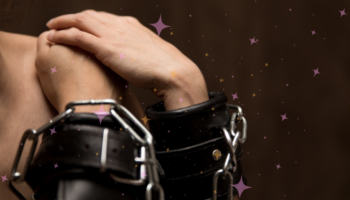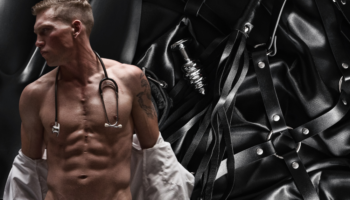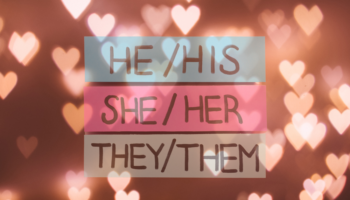Perspectives
On the Spectrum: Lesser Known Identities
Published: JULY 31, 2015 | Updated: AUGUST 5, 2015
The more we know about all the different kinds of people in the world, the more we will understand each other.- and ourselves.
There’s a ton of confusion surrounding sexual preferences and sexual identities, not to mention gender identities. Oh, and then there's biology.
In recent years, some identities are getting a lot of exposure, especially when it comes to people from the trans community. Laverne Cox and Caitlyn (formerly known as Bruce) Jenner have graced the covers of Time Magazine and Vanity Fair. While we can thank new generation pioneers for this (although they too stand on the shoulders of giants), we also must disseminate information about the other identities. We can only do this by engaging in frank discussion.
To begin, I wanted to present a brief primer on five identities that will help people become a little less confused and a little more knowledgeable about the differences of the people around them. It should be noted this list is a brief outline. It is by no means exhaustive, and there are always exceptions to the rule.
Transgender
I wanted to cover this gender identity first in light of the recent coverage it’s received. Simply put, a person who identifies as transgender doesn’t feel the sex they were assigned at birth is a true representation of who they truly are inside. Typically, this is someone born as female who identifies as male (trans man) or someone who was born male who identifies as female (trans woman). These people may or may not choose to undergo reassignment surgery.
It should also be noted that asking about their anatomy is considered deeply inappropriate. Imagine how uncomfortable you would feel if someone asked you sensitive questions about your body. Check this out this video to see how uncomfortable this experience can be for those in the trans community when the tables turn and a straight reporter is questioned about her identity.
Additionally, when we hear of trans men and women we may also hear the term cisgender. Someone who identifies as cisgender is a person whose identity is in agreement with who they were at birth.
Genderqueer
A person who identifies as genderqueer doesn’t feel that their identity fits with the socially constructed norms of "male" or "female." They may identify as trans or something else entirely. Some don’t like traditional gender-based pronouns such as "he/her." Instead, they may opt to use "hir/zir," or simply "their." Genderqueer is usually an umbrella term used in opposition to the rigid categories found in the LGBTQIA labels. People who identify as genderqueer typically choose to move outside of sexual labels altogether.
Androgynous
Androgyny isn't so much about gender identity as it is about expression. A person who is androgynous has an appearance that could be male or female. Despite their biological sex - or even their gender - androgyny refers to the appearance that person chooses, one that embraces the traditional characteristics of both male and female. An androgynous person can identify as any gender, but they choose to express their gender as neither male nor female but somewhere in the middle. Androgyny is often thought to be based only on clothes, hair and makeup, but it is also expressed by how a person behaves and interacts with others.
Intersex
OK, this one isn't an identity. Intersex is about biology, but we're listing here because it often has a complicated relationship with identity. An intersex individual is someone who is born with reproductive or sexual anatomy that doesn't fit the typical definition of male or female. In the past, these children were often assigned a sex (and corresponding gender), and may even have had surgery performed so that their bodies conformed more closely to what we expect for someone who is male or female. Fortunately, in recent years sensitivity to this issue has increased, as has acceptance for intersex people (who account for as many as 1 in 100 births). Groups that advocate for intersex people are against reassignment surgery, and support allowing intersex people to choose their gender identities based on how they feel. As we've learned, that gender identity may be male, female, or somewhere in between. As we've also learned, that identity may not reflect what we'd traditionally expect based on their biological traits or appearance.
Asexual
Asexuality can be considered a sexual orientation, but it may be more accurately considered a lack of sexual orientation. Asexuals tend to have little or no sexual attraction to anyone. Unlike celibacy, which is a choice, asexuality is now recognized as an intrinsic part of a person, just like being gay or straight (or somewhere in between!) It's also important to understand the asexual people may still be attracted to other people, but will typically choose to act on that attraction in non-sexual ways. Asexual people may also be attracted to a certain gender, and may identify as straight, gay, bi, etc. (Neat, huh?)
No matter what your sexual identity or orientation, by attempting to understand each other, no matter how different we are, we force ourselves to expand beyond popular conceptions of the ‘norm.’ In such a progressive age, it’s important that we learn more about ways of being that differ from our own. To do so indicates a desire to be more empathic and open toward one another. By doing this, we can all experience our inherent interconnectedness on a deeper level.





